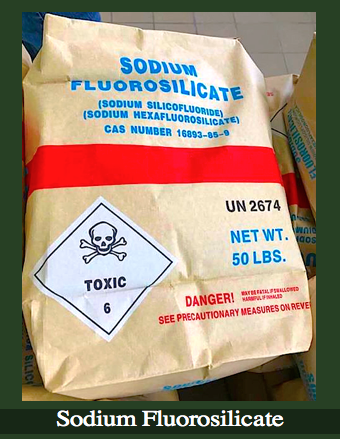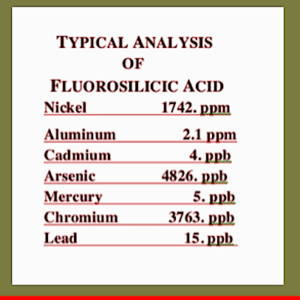

.
A MORATORIUM ON SILICOFLUORIDE
USAGE WILL SAVE MILLION$
SUMMARY:
Lead, a toxin that lowers dopamine function, has been associated with violent behavior as well as learning deficits. Hydrofluosilicic acid and sodium silicofluoride, which were substituted for sodium fluoride without testing as chemicals for public water treatment, increase absorption of lead from the environment and are associated with violent behavior.
.
Given the costs of incarcerating violent criminals, these side-effects justify a moratorium of silicofluorides for water treatment until they are shown to be safe...
Scientific studies have shown that two unsuspected factors have a significant effect on rates of violent crime:
.
First, pollution from lead and other heavy metals (due to effects on brain chemistry);
.
Second, use of silicofluorides in water treatment (which epidemiological studies found are associated with higher absorption of lead from sources in the environment).3-5 As a concrete example of the costs to local taxpayers from these links between toxic chemicals and violent crime, this editorial presents statistics focused on a single county in Oregon.
These figures, originally computed to show the error of mandatory statewide fluoridation, reveal the enormous potential benefits to taxpayers of a moratorium on such use of silicofluorides until they are proven to be safe...
LEAD AND MANGANESE:
Over the last 30 years, scientific evidence has discovered why toxins like lead and manganese are associated with higher rates of violent crime. Lest this seem absurd, we need to remember that chemicals do affect behavior (which is why some 83 million Americans take fluoxetine (Prozac) and why police try to arrest drunk drivers before accidents). For example, because lead interferes with the neurotransmitter dopamine that controls impulsive behavior, exposure to lead pollution has greater effects on violent crime than on property crime (which takes planning and self-control)...
SILICOFLUORIDES:
My work with Myron Coplan on hydrofluorosilicic acid (H2SiF6) and sodium silicofluoride (Na2SiF6) has provided epidemiological evidence that these silicofluorides—now used for over 90% of water fluoridation—increase absorption of lead from the environment into children’s blood (unlike sodium fluoride, which does not have this effect). Given the evidence associating lead with loss of impulse control and violence, we have also studied and published evidence on the association between silicofluoride use for water fluoridation and violent crime rates. This editorial reflects the experience of focusing these results on policy issues in several states.6.
VIOLENT CRIME:
The average violent crime rate in US counties with lead pollution but no silicofluoride use (168 per 100,000) is substantially below the rate in counties with both treated water and lead pollution (262 per 100,000). That is, considering all US counties where lead pollution has been recorded by the EPA, rates of violent crime are about 56% higher if silicofluorides are used in water treatment. These differences are evident when comparing average rates of Fluoride 2005;38(1):1–5 Guest editorial 1
Fluoride 2005;38(1)
2 Masters violent crime in all US counties (Figures 1a,b) and confirmed by more complex statistical analyses that control for other social factors associated with crime. 5,7Violent crimes per300 250 200100,000 150 population100 50 0
No lead pollution
% County exposed to silicofluorides
Lead pollution
Significance: Lead p<0.0002; Silicofluoride p<0.0001; Interaction: p=0.065 Figure 1b. Lead, silicofluorides, and violent Crime: all US counties, 1994.Putting criminals in jail is expensive for taxpayers. Recently, when testifying before the Public Safety committee of the California State Assembly on manganese toxicity and violent crime, I realized that policy-makers need to know how much money taxpayers could save by stopping or preventing an…
Fluoride 2005;38(1)

![]()








